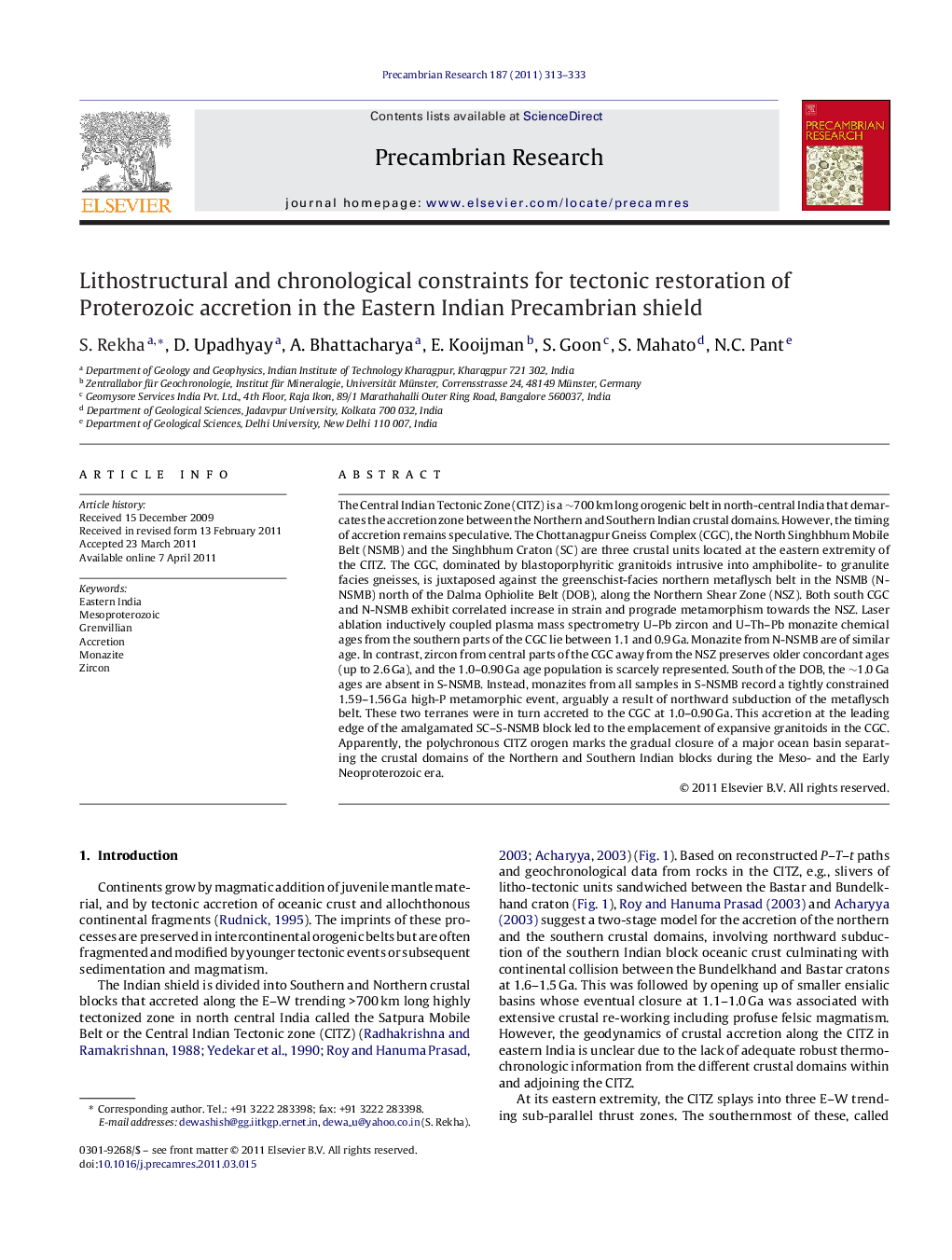| کد مقاله | کد نشریه | سال انتشار | مقاله انگلیسی | نسخه تمام متن |
|---|---|---|---|---|
| 4723805 | 1639669 | 2011 | 21 صفحه PDF | دانلود رایگان |

The Central Indian Tectonic Zone (CITZ) is a ∼700 km long orogenic belt in north-central India that demarcates the accretion zone between the Northern and Southern Indian crustal domains. However, the timing of accretion remains speculative. The Chottanagpur Gneiss Complex (CGC), the North Singhbhum Mobile Belt (NSMB) and the Singhbhum Craton (SC) are three crustal units located at the eastern extremity of the CITZ. The CGC, dominated by blastoporphyritic granitoids intrusive into amphibolite- to granulite facies gneisses, is juxtaposed against the greenschist-facies northern metaflysch belt in the NSMB (N-NSMB) north of the Dalma Ophiolite Belt (DOB), along the Northern Shear Zone (NSZ). Both south CGC and N-NSMB exhibit correlated increase in strain and prograde metamorphism towards the NSZ. Laser ablation inductively coupled plasma mass spectrometry U–Pb zircon and U–Th–Pb monazite chemical ages from the southern parts of the CGC lie between 1.1 and 0.9 Ga. Monazite from N-NSMB are of similar age. In contrast, zircon from central parts of the CGC away from the NSZ preserves older concordant ages (up to 2.6 Ga), and the 1.0–0.90 Ga age population is scarcely represented. South of the DOB, the ∼1.0 Ga ages are absent in S-NSMB. Instead, monazites from all samples in S-NSMB record a tightly constrained 1.59–1.56 Ga high-P metamorphic event, arguably a result of northward subduction of the metaflysch belt. These two terranes were in turn accreted to the CGC at 1.0–0.90 Ga. This accretion at the leading edge of the amalgamated SC–S-NSMB block led to the emplacement of expansive granitoids in the CGC. Apparently, the polychronous CITZ orogen marks the gradual closure of a major ocean basin separating the crustal domains of the Northern and Southern Indian blocks during the Meso- and the Early Neoproterozoic era.
► Crustal accretion along the eastern fringe of the Central Indian Tectonic Zone (CITZ) involved two stages.
► Mesoproterozoic subduction and closure of oceanic basin at ∼1.55 Ga led to the amalgamation of the Singhbhum Craton with the North Singhbhum Mobile Belt.
► Closure of oceanic basin between the North Singhbhum Mobile Belt and the Chottanagpur Gneiss Complex in the early Neoproterozoic (∼1.0 Ga) amalgamated these two crustal units.
► The polychronous CITZ orogen marks the gradual closure of a major ocean basin separating the crustal domains of the Northern and Southern India blocks during the Meso- and the Early Neoproterozoic era.
Journal: Precambrian Research - Volume 187, Issues 3–4, June 2011, Pages 313–333